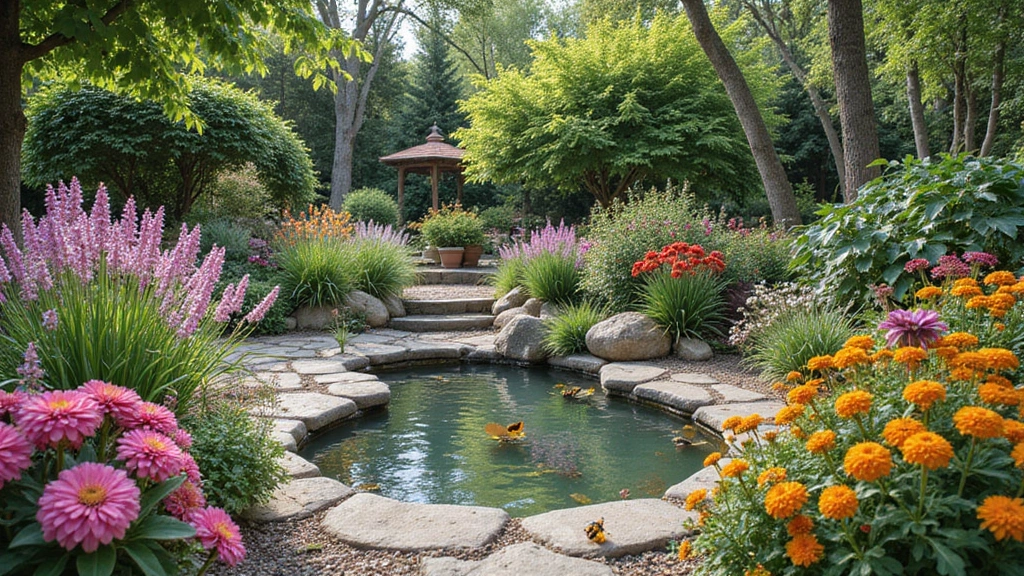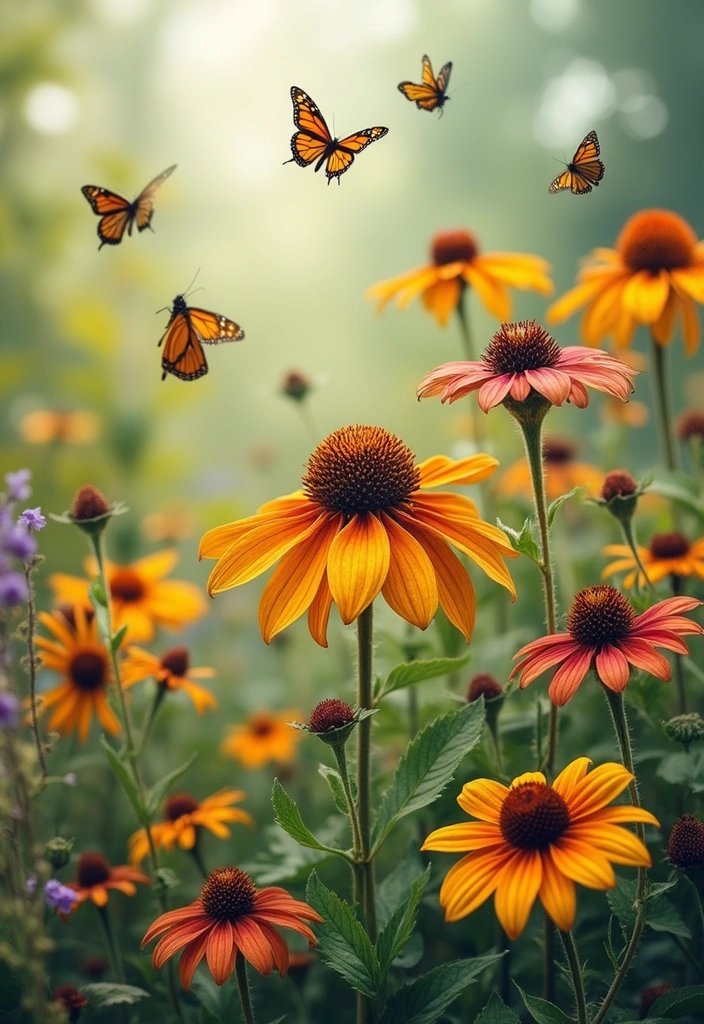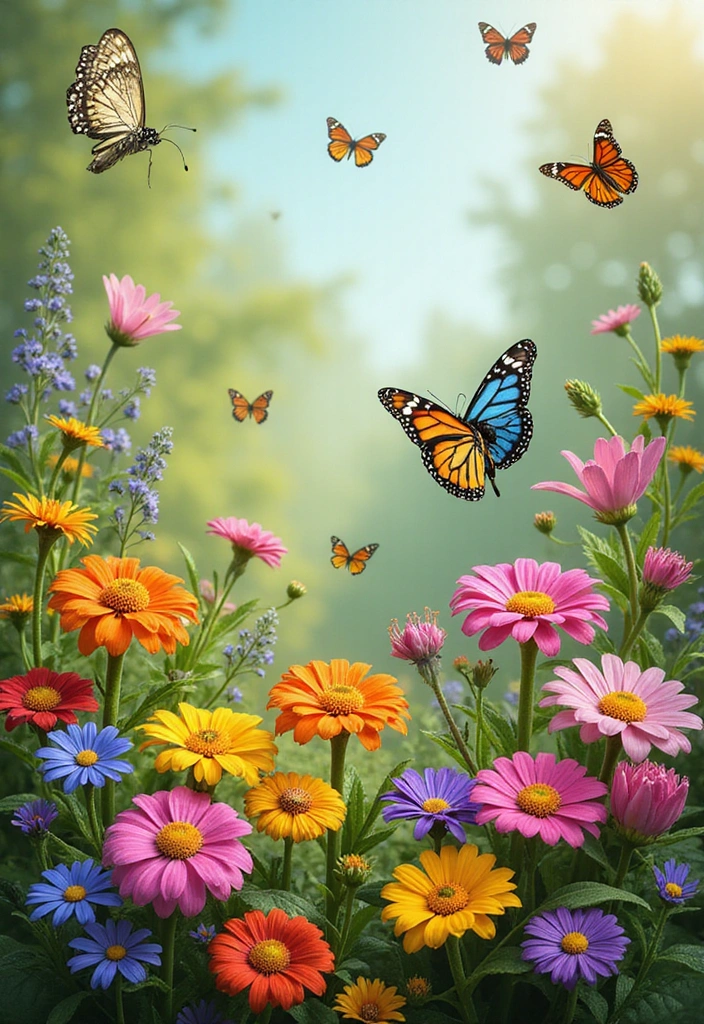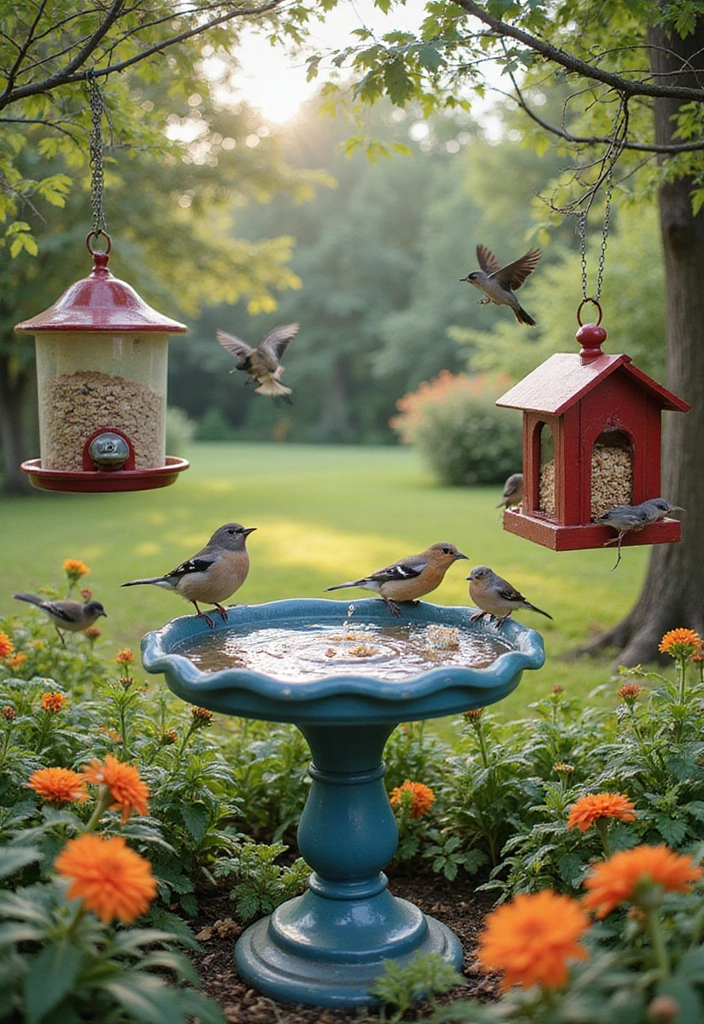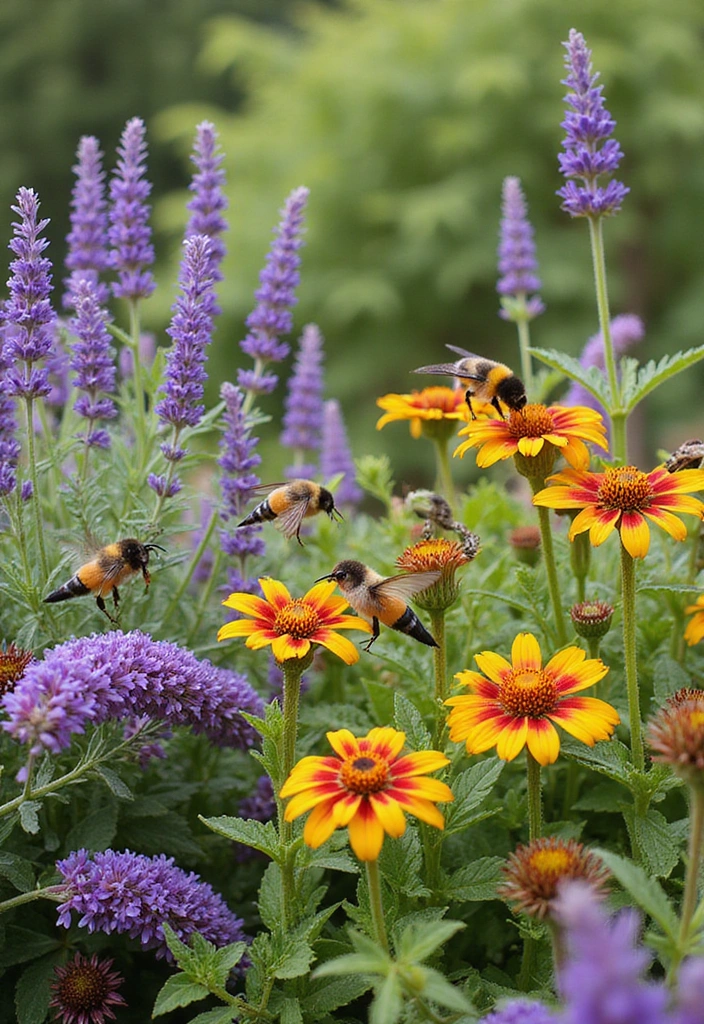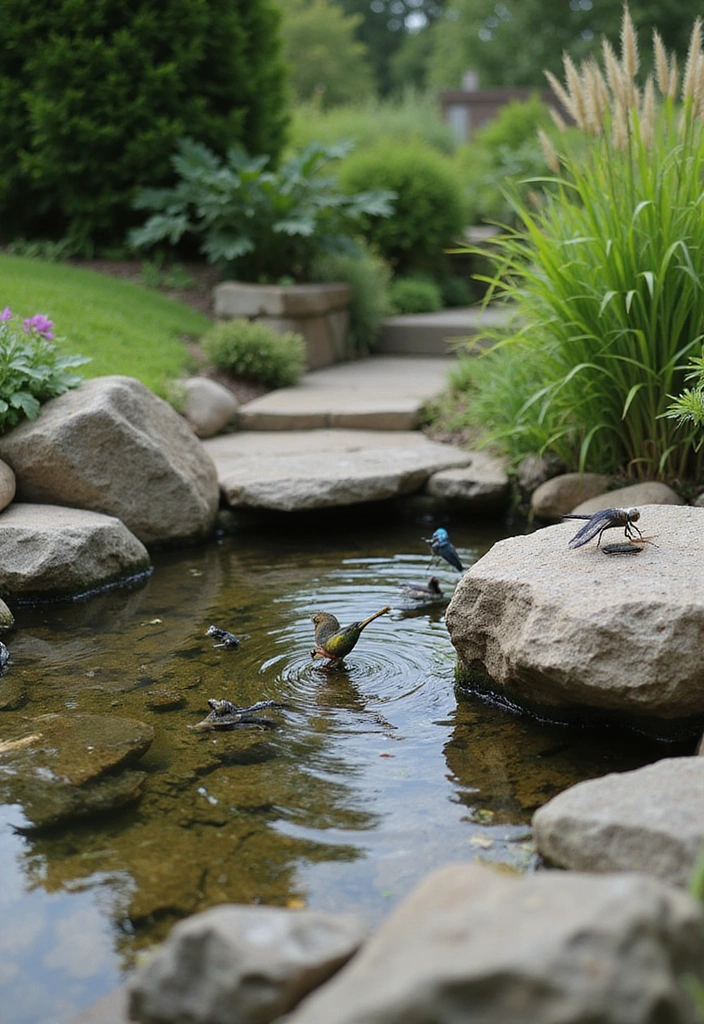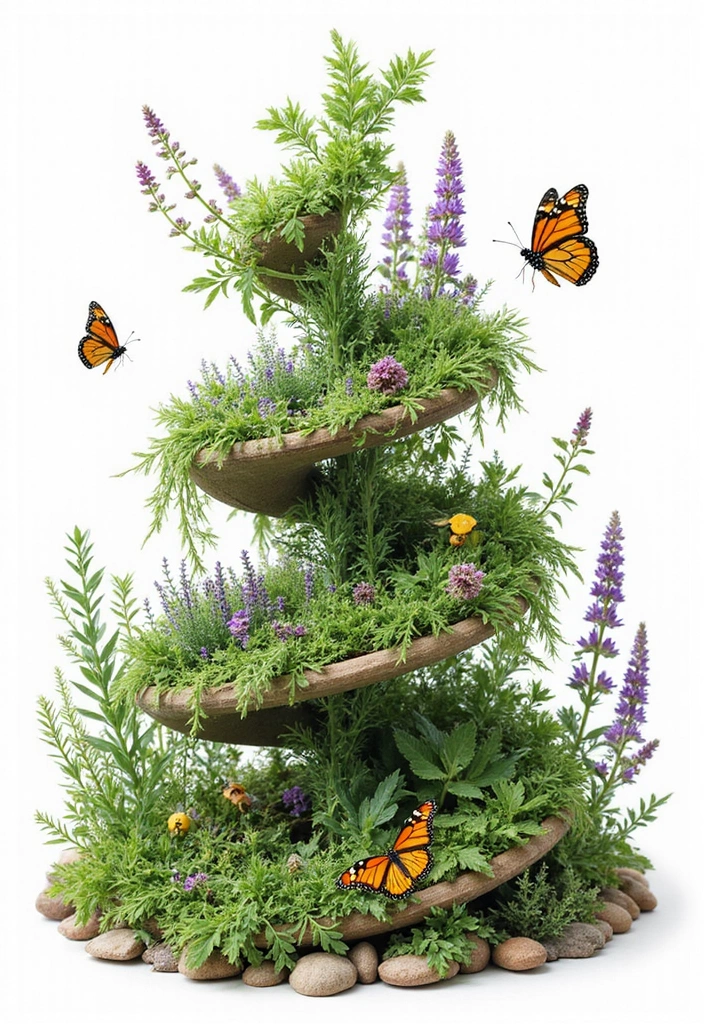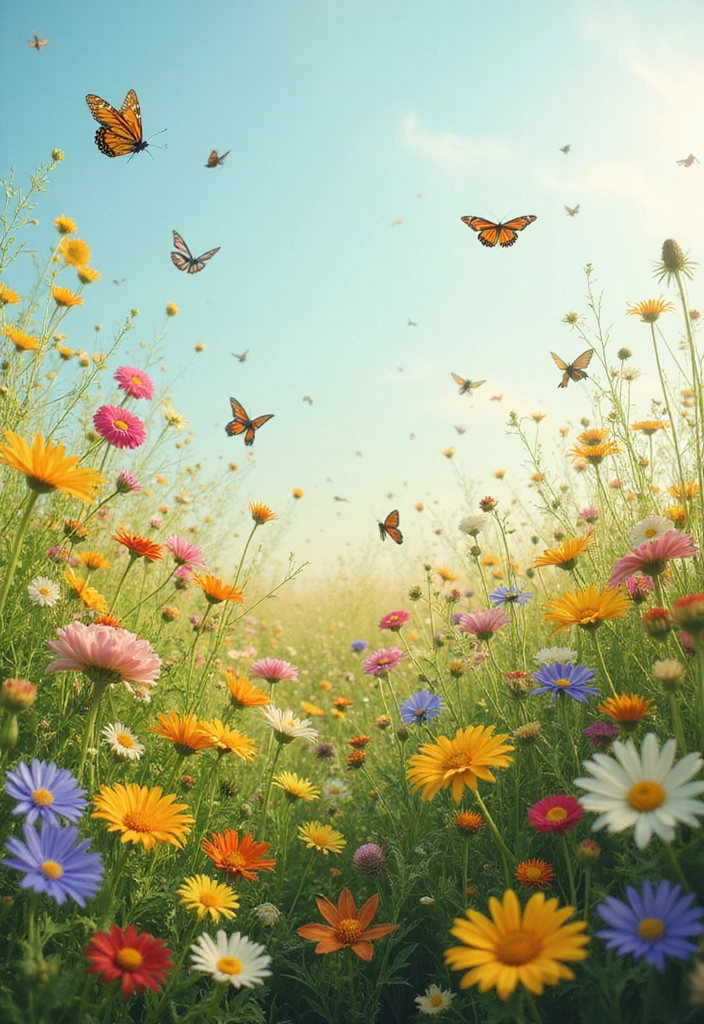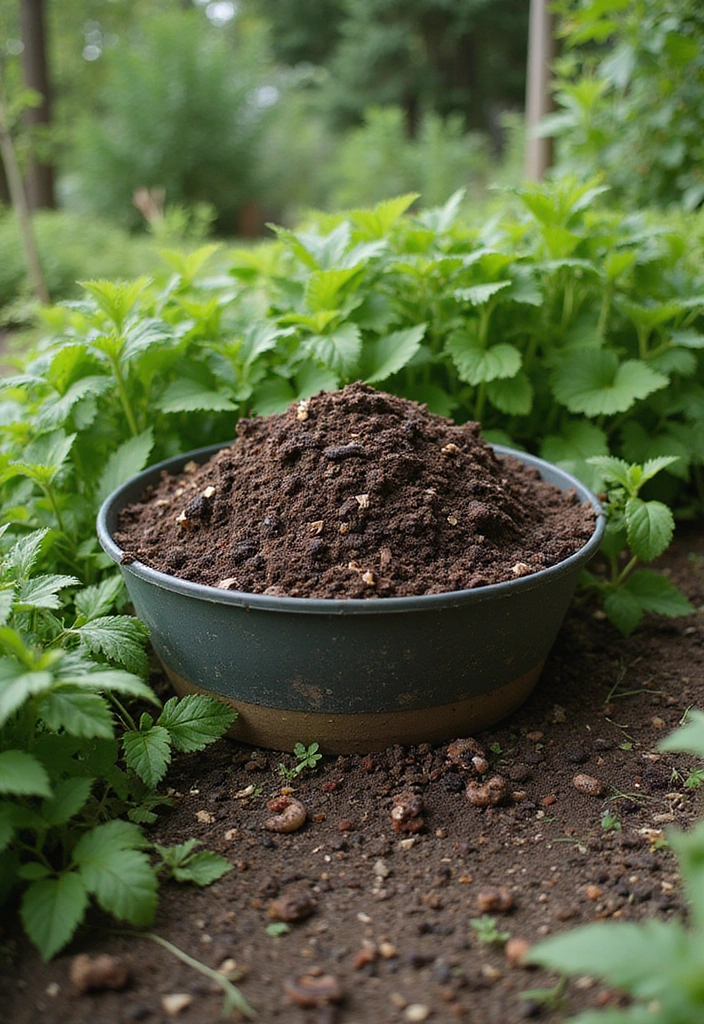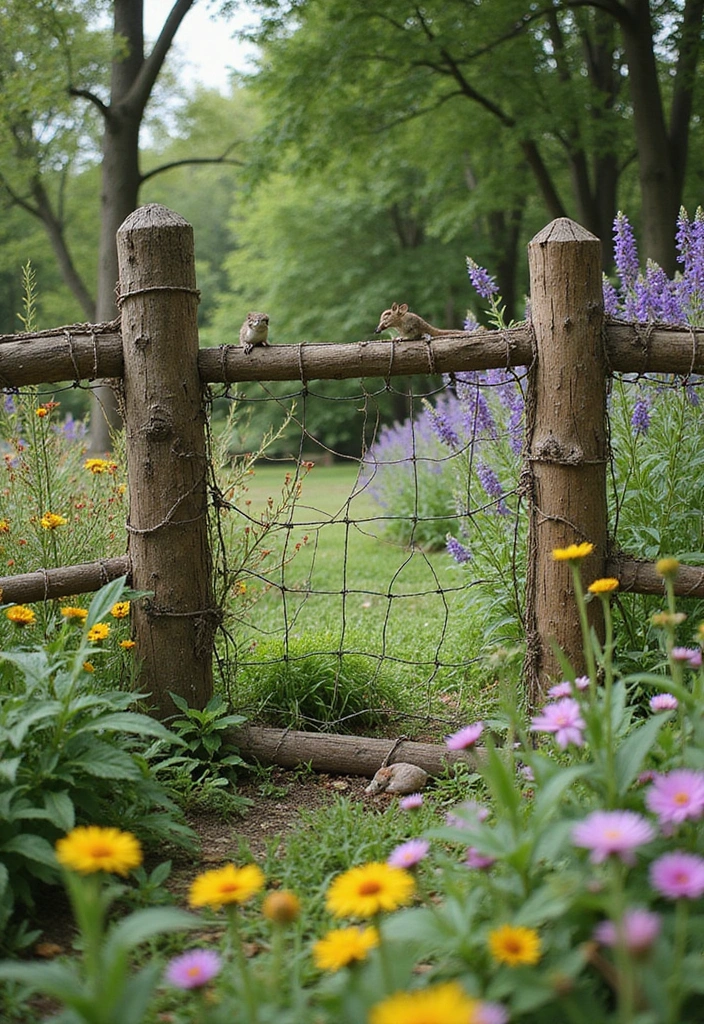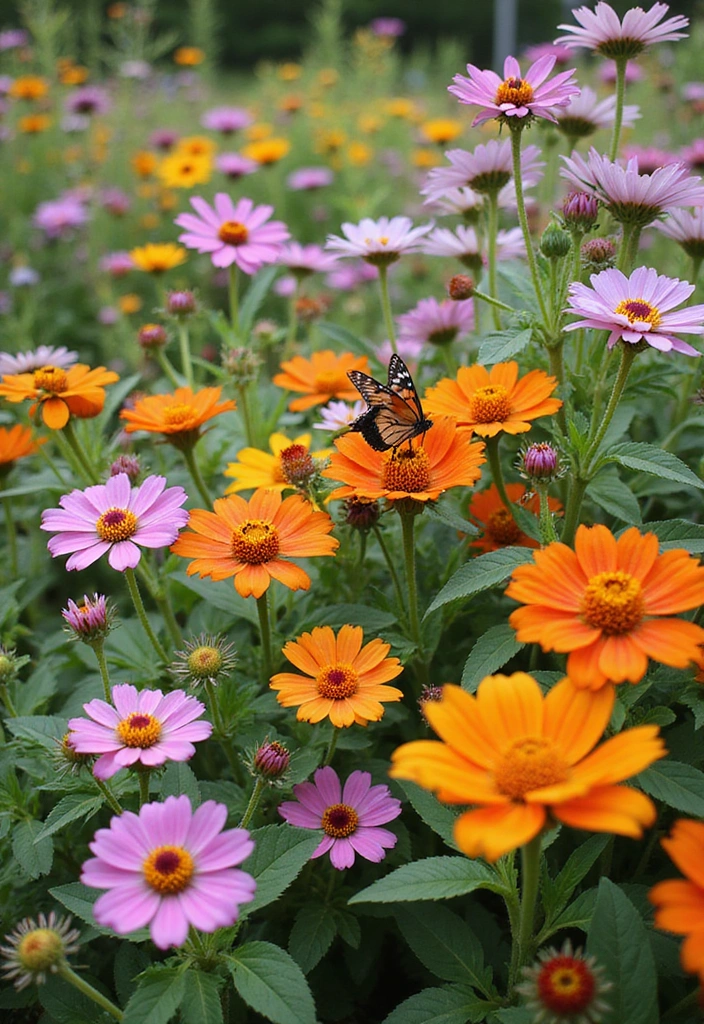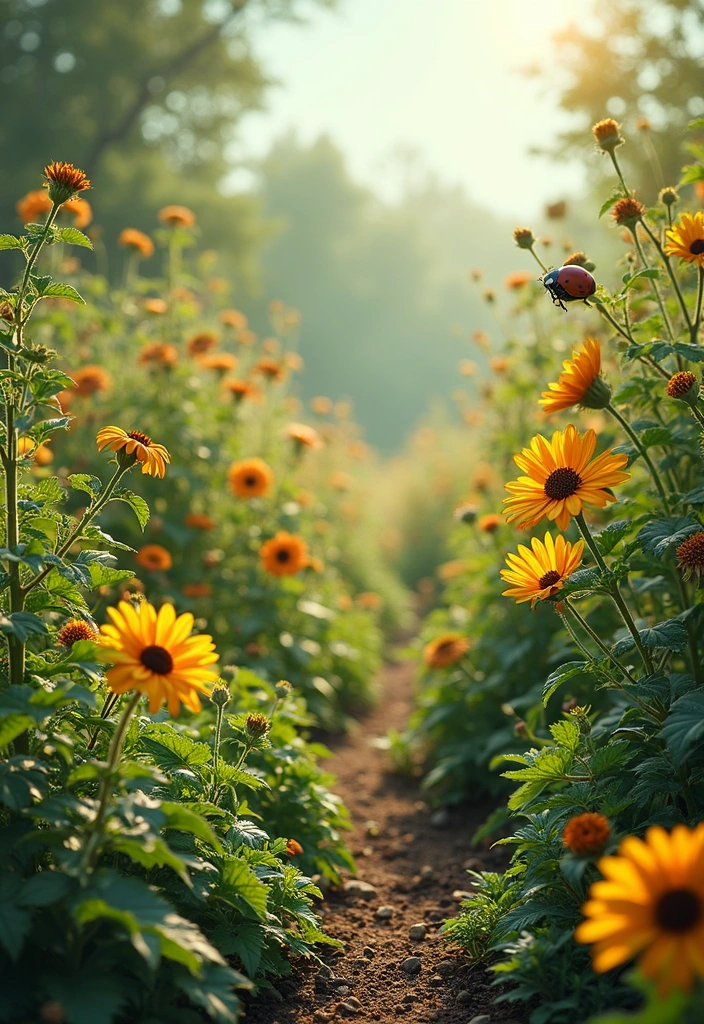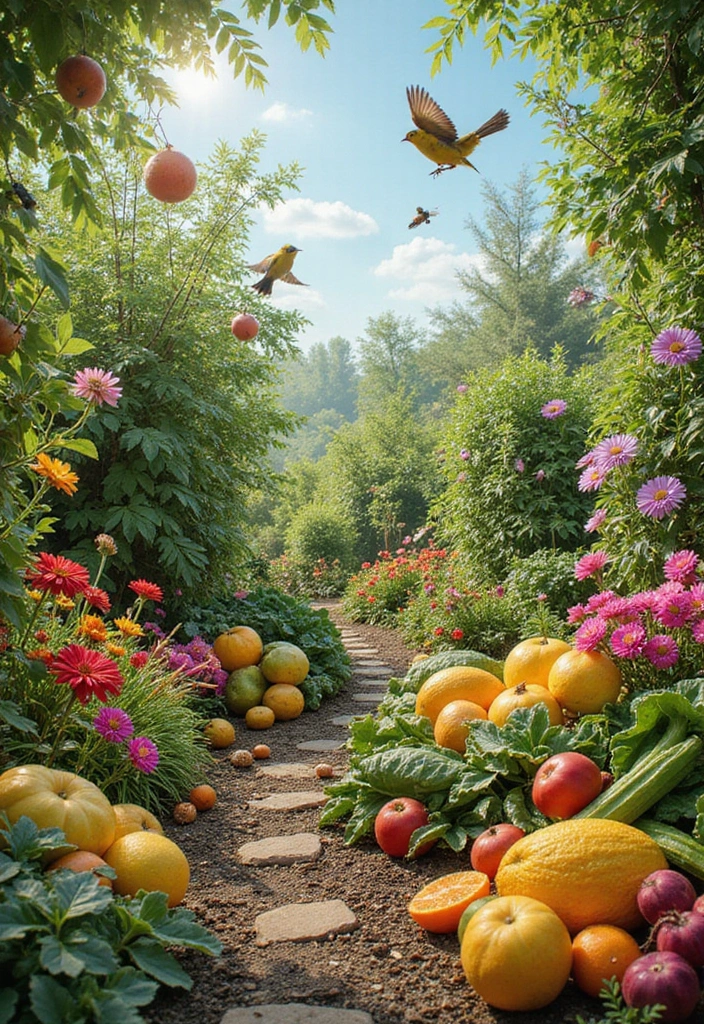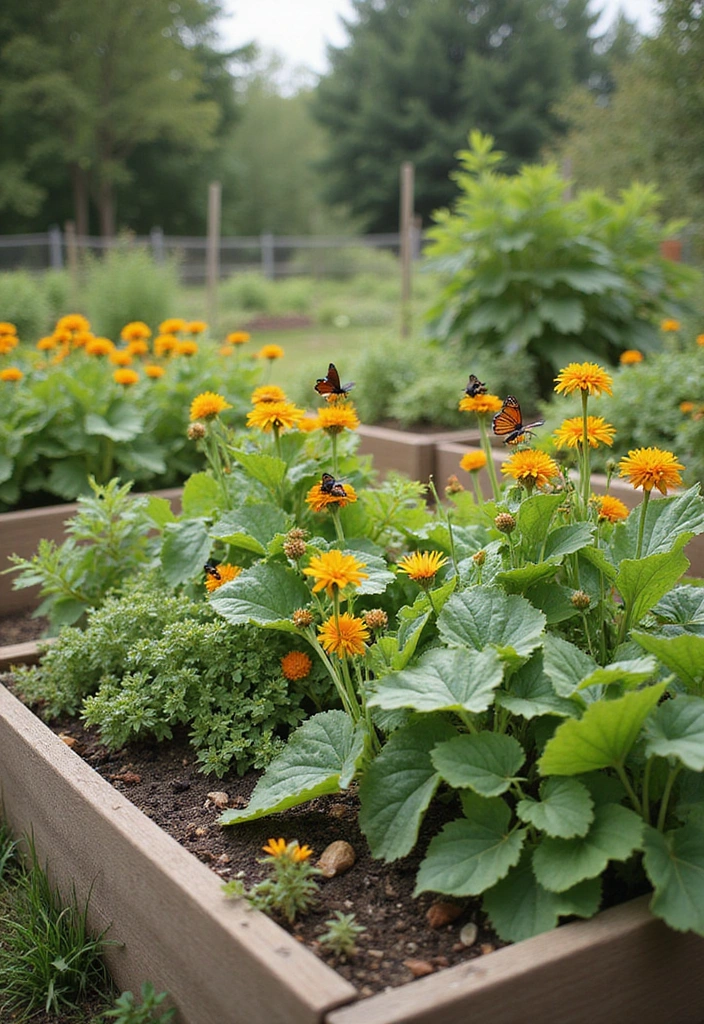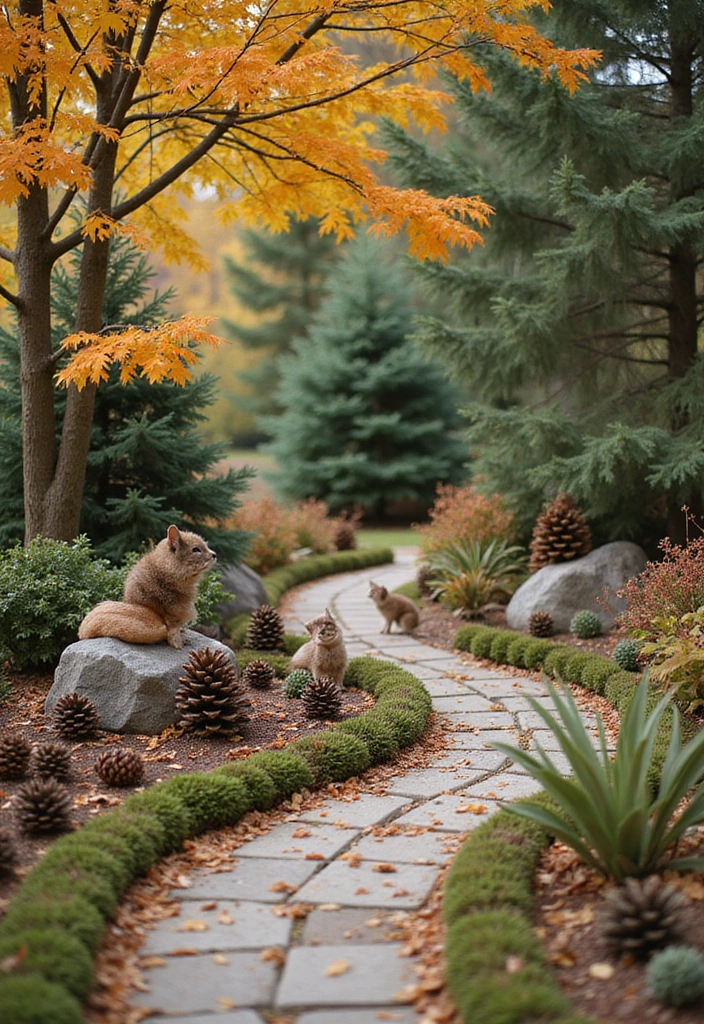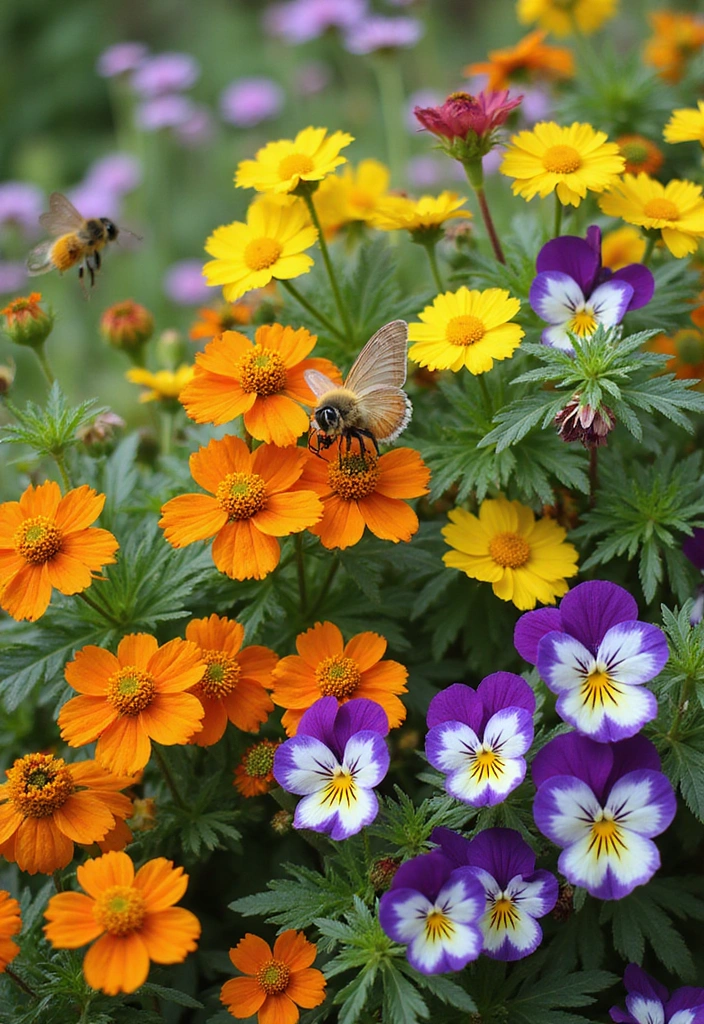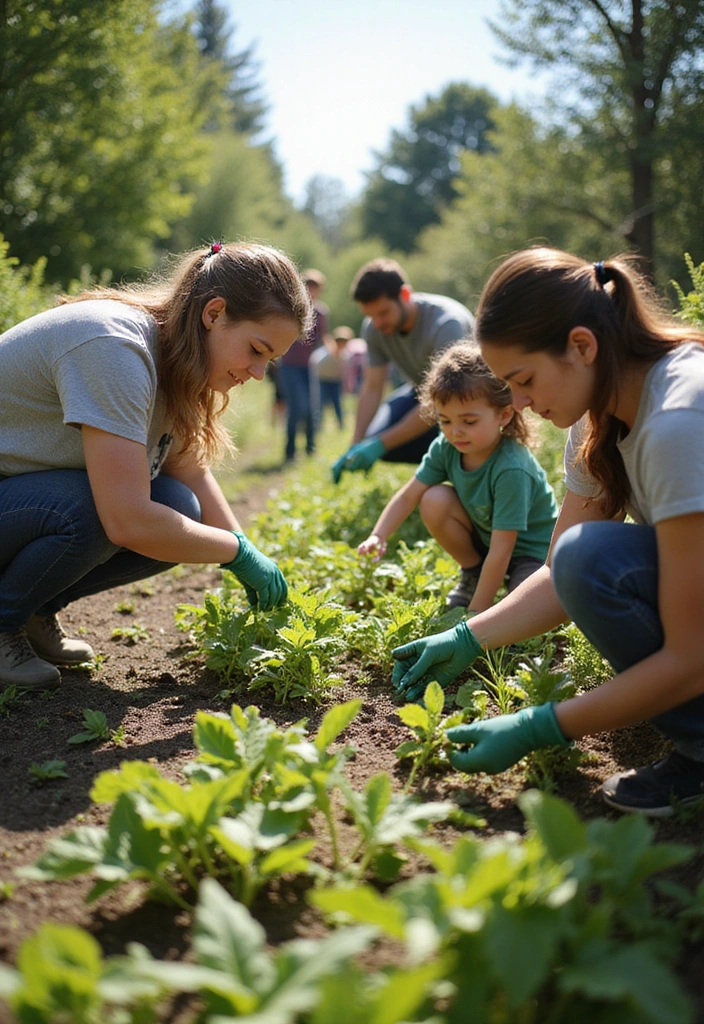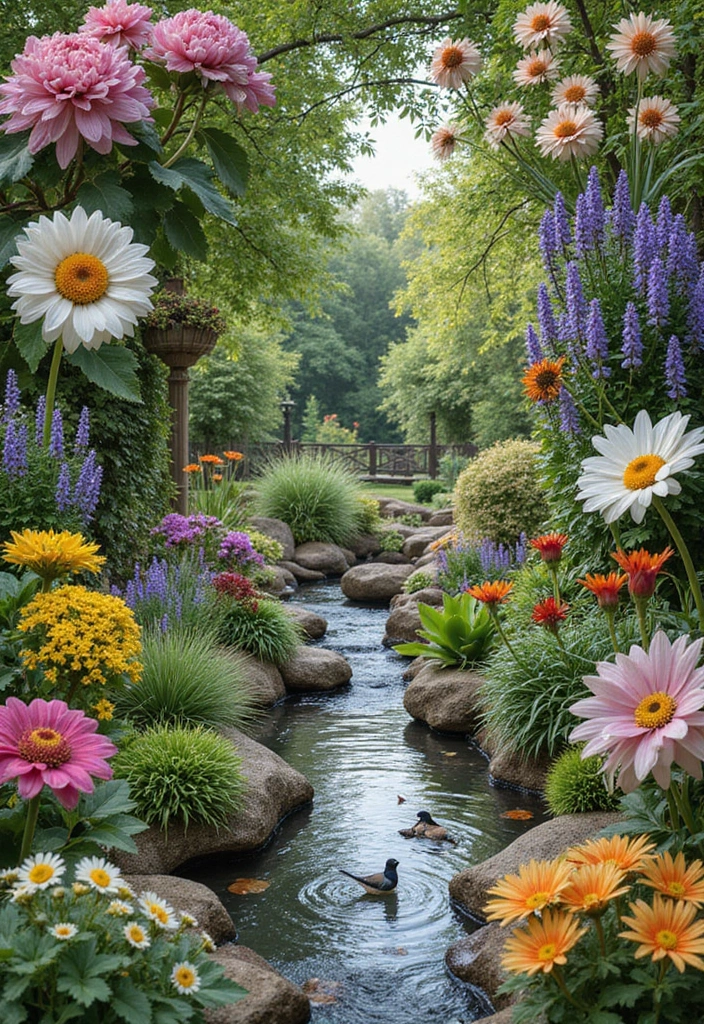21 Home Garden Ideas to Attract Wildlife and Create Your Own Eco-Friendly Sanctuary!
21 Home Garden Ideas to Attract Wildlife and Create Your Own Eco-Friendly Sanctuary!
Creating a home garden that invites wildlife is not just a trend; it’s a powerful way to contribute positively to the environment.
From blooming flowers to cozy habitats, every inch of your garden can become a haven for butterflies, birds, and beneficial insects. Transforming your outdoor space into an eco-friendly sanctuary is easier than you might think.
Let’s explore 21 enchanting home garden ideas that will help you attract wildlife while making your garden a beautiful place to unwind. Each idea is crafted to inspire you to embrace nature while creating a picturesque environment right outside your door. Get ready to dive into the magical world of wildlife gardening!
1. Native Plant Paradise
Start your wildlife garden with native plants that are well-adapted to your local climate. These plants not only require less water and care but also provide essential food and habitat for local wildlife. Native species attract bees, butterflies, and birds, creating a thriving ecosystem. For example, if you live in the Midwest, consider adding coneflowers, black-eyed Susans, or native shrubs like serviceberry.
To kickstart your planting, you might find the native wildflower seed mix incredibly helpful. This extra large packet contains over 7,500 open-pollinated and non-GMO seeds, perfect for establishing a vibrant native plant garden in states like New York, Virginia, and Pennsylvania.
To maximize your native plant garden, consider grouping plants of the same species together to create a more inviting habitat. Using various heights can add depth and attract different wildlife. Additionally, if you’re interested in enhancing the environment for beneficial creatures, a pollinator habitat kit could be a fantastic addition. This starter kit is designed to support tropical-dwelling reptiles but can also serve as inspiration for establishing a habitat that supports local pollinators.
Lastly, be sure to avoid chemical pesticides to ensure the safety of the creatures you wish to attract. By incorporating native flora and using helpful resources, you’ll provide a beautiful display while supporting local biodiversity.
2. Butterfly Garden
Create a dedicated butterfly garden by planting flowers that attract these beautiful insects. Species such as milkweed, lantana, and zinnias are irresistible to butterflies and are easy to grow. To create the perfect butterfly haven, include a variety of nectar-rich flowers blooming at different times throughout the season. You can start with the butterfly garden seed mix, which features 24 varieties of flowers tailored to attract both butterflies and hummingbirds.
Additionally, don’t forget to include host plants for caterpillars, like parsley for swallowtail butterflies, to ensure your garden supports their entire lifecycle. It’s also essential to provide shallow water sources, such as a birdbath filled with stones, to give butterflies a safe place to hydrate. The birdbath with stones not only serves this purpose beautifully but also adds an aesthetic touch to your garden.
Design your garden in sunny spots, as butterflies love basking in the warmth. Finally, keeping your garden free of chemicals ensures a safe haven for these delicate creatures, allowing them to thrive in your eco-friendly sanctuary.
3. Bird Feeders and Baths
No wildlife garden is complete without a selection of bird feeders and baths. Setting up feeders filled with seeds, suet, or nectar will attract a delightful array of birds all year long. Consider these tips:
– Use different types of feeders to attract various species: a tube bird feeder is perfect for finches, while a platform bird feeder accommodates larger birds. Hummingbird feeders can bring in those quick visitors that flit by your garden.
– Ensure the feeding area is safe from predators by placing feeders near bushes or trees. This helps create a safe haven for your feathered friends.
– Adding a birdbath with fresh water, such as the bird bath with stand, will encourage birds to linger, providing a splash of movement and sound.
Maintain cleanliness by regularly cleaning feeders and baths to prevent disease and keep your feathered friends happy. With these thoughtful additions, you can easily create an inviting environment for birds in your own backyard sanctuary.
4. Pollinator-Friendly Plants
💥🎁 Christmas & Year-End Deals On Amazon !
Don't miss out on the best discounts and top-rated products available right now!
🛒 Shop Now and Save Big Today!*As an Amazon Associate, I earn from qualifying purchases.
Enhance the beauty of your garden while attracting pollinators with specific plants designed for them. Flowers like lavender, bee balm, and salvia will bring in bees and hummingbirds, which are vital for the ecosystem. To make your garden buzz with life, consider using pollinator-friendly flower seeds mix, which includes 18 varieties of non-GMO flower seeds specifically tailored to attract a diverse array of pollinators.
To further promote vibrant growth and health in your plants, you might want to incorporate an organic fertilizer for flowering plants. This product provides essential nutrients that help your garden flourish, ensuring that your flowers are not only beautiful but also nourishing for the local wildlife.
When planning your garden, aim for a mix of colors and scents to captivate different species. Grouping plants in clusters can create a larger target for pollinators, making it easier for them to find their food source. Additionally, avoid non-native or genetically modified plants, as they may not provide the nutrition that local pollinators need.
With a little planning and the right products, you can create a vibrant space buzzing with activity all season long! If you’re looking for guidance on general gardening practices, consider the garden planting guide book to help you navigate your gardening journey successfully.
5. Cozy Nesting Boxes
Encourage birds to make your garden their home by installing cozy nesting boxes. These comfortable spots offer safety and shelter for birds during nesting season. Here’s how to set it up right:
– Choose nesting boxes suitable for local bird species. For example, the Wooden Bird Nesting Box is ideal for attracting bluebirds, chickadees, and wrens, as it meets their specific needs.
– Ensure the boxes are placed at appropriate heights, ideally in sheltered areas away from predators. The Bird Feeder with Nesting Box not only serves as a feeding station but also provides a safe nesting option for your feathered friends.
– Clean the boxes annually to remove old nesting materials and keep them inviting. Using the Birdhouse Cleaning Kit will help ensure your birdhouses and feeders are clean and safe, encouraging greater bird activity.
By providing these nesting boxes and maintaining them well, you’ll create an environment that supports bird populations and brings the joy of watching them raise their young.
6. Water Features
Incorporating a small pond, fountain, or even a birdbath can transform your garden into a wildlife oasis. Water sources are essential for many creatures, including insects, birds, and small mammals. Here’s how to create a welcoming water feature:
– Use a naturalistic design with rocks and plants around the water to attract various wildlife. For an easy starting point, consider the Garden Pond Kit, which includes everything you need to set up a beautiful pond structure that supports local wildlife.
– Ensure the water is shallow for easy access; add stones or shallow edges for safety. If you’re looking for an elegant water feature, a Solar Fountain Pump can create a delightful fountain effect, offering birds a refreshing drink while enhancing the aesthetic of your garden.
– Regularly change the water in birdbaths to keep it fresh and clean. A stylish birdbath with stand not only provides a reliable water source for birds but also adds an attractive focal point to your garden.
With your water feature, you’ll invite a plethora of wildlife to enjoy your garden, turning it into a serene retreat.
7. Herb Spiral
Create an herb spiral to both beautify your garden and provide essential plants for wildlife. This design not only saves space but also optimizes water usage and supports various plants. An herb spiral typically features spiraled layers of soil, allowing for a variety of herbs to thrive. Here’s how to do it:
– Stack stones or bricks in a spiral shape and fill it with soil. For a great start, consider using Miracle-Gro organic outdoor potting mix. This garden soil mix is designed for container plants and contains quick-release natural fertilizer, ensuring your herbs have the nutrients they need to grow strong.
– Plant herbs that attract insects, like dill and fennel, at the top and moisture-loving ones like mint at the bottom. To get a variety of organic options, check out the organic herb seeds variety pack. This 10-pack includes everything from basil to dill, which will not only enhance your cooking but also draw in beneficial pollinators.
– The diversity of plants will attract many pollinators and beneficial insects. To make planting easier, you might find a herb spiral kit helpful. These vertical planters are stackable, allowing you to create your herb spiral without a lot of hassle, and they come with removable wheels for easy movement.
With an herb spiral, you’ll enjoy the benefits of fresh herbs while promoting wildlife-friendly environments.
8. Wildflower Meadow
If you have space, consider converting a portion of your lawn into a wildflower meadow. This not only reduces lawn maintenance but creates a stunning habitat for various wildlife. To create your meadow, start by choosing a mix of native wildflower seeds that thrive in your area. A great option is the Northeast Wildflower Seeds – Extra Large 1 Ounce Packet, which includes over 7,500 native seeds that are open pollinated and non-GMO, perfect for regions like New York, Virginia, Pennsylvania, and Maine.
Scatter the seeds in early spring or fall and allow the flowers to grow without mowing until the end of the season; this will provide nectar and habitat for pollinators. Additionally, consider adding grasses for structure and extra wildlife benefits. Your wildflower meadow will not only be a feast for the eyes but also a sanctuary for bees, butterflies, and insects, enriching your outdoor experience.
9. Composting Area
💥🎁 Christmas & Year-End Deals On Amazon !
Don't miss out on the best discounts and top-rated products available right now!
🛒 Shop Now and Save Big Today!*As an Amazon Associate, I earn from qualifying purchases.
Creating a composting area in your garden is a small step that can have a big impact on the environment. This practice not only reduces waste but also enriches your soil, attracting earthworms and beneficial insects. To set up an effective compost area, consider investing in a VIVOSUN outdoor tumbling composter dual rotating batch compost bin. This 43-gallon bin provides a contained space with adequate air circulation, making it easier for you to manage your compost.
To maintain a healthy compost, balance green materials like vegetable scraps with brown materials such as dried leaves to achieve the ideal nitrogen and carbon mix. Using a Yard Butler compost aerator can help you aerate and circulate your compost effectively. This durable tool makes mixing easy and speeds up the decomposition process, ensuring your compost breaks down efficiently.
For those new to composting, having a reliable resource is essential. The Black Gold composting guide book offers valuable insights into the science behind making your own sustainable fertilizer. It can help you understand the nuances of composting and enhance your knowledge for a thriving eco-friendly garden.
Not only will setting up a compost area enrich your garden soil, but it will also create a bustling habitat for decomposing creatures, enhancing your wildlife garden.
10. Wildlife-Friendly Fencing
If you’re seeking to attract small mammals or frogs, consider installing wildlife-friendly fencing. Traditional fencing can block animals from entering your garden, but using lower, open designs can allow wildlife access while keeping out larger pests. Here’s what to consider:
– Use materials that are easy for wildlife to navigate; think woven wire fencing, like the heavy duty farm fence, which features a 2×4 inch mesh that small animals can easily slip through while providing durability against larger creatures.
– Ensure the fencing is not too high to allow small animals to hop over easily. A low wooden garden fence can serve this purpose perfectly, providing a charming border while being low enough for critters to pass.
– Create gaps or openings in your garden where creatures can enter freely. You might find the garden fence gaps or openings kit helpful for ensuring these access points are both functional and secure.
This addition not only protects your plants but also encourages a diverse range of wildlife to visit, enriching your garden’s ecosystem.
11. Insect Hotels
Providing shelter for beneficial insects can drastically improve your garden’s health. Insect hotels are easy to build or purchase, and they give a safe space for pollinators and predatory insects to thrive. To create an inviting insect hotel, consider using natural materials like bamboo, pine cones, straw, and wood. A great option for this is the Navaris bamboo bee nesting tubes, which come in a pack of 60 and are perfect for filling insect hotels and bug houses.
Position the hotel in a sunny spot to warm the insects, and remember to keep it clean and placed in diverse habitats while minimizing chemicals around it. To maintain a healthy environment, you might also want to use a natural pest control solution. The Mighty Mint peppermint oil insect repellent spray offers plant-based, extra-strong formula to help keep unwanted pests at bay without harming your beneficial insect population.
Insect hotels will not only help your garden flourish by attracting pollinators but will also add a unique visual element to your garden. If you’re interested in building your own structure, check out the premium bug hotel kit, which is an educational DIY cedar wood craft suitable for families, teachers, and anyone looking to enhance their gardening efforts.
12. Rock and Log Piles
Creating small rock and log piles in your garden provides perfect habitats for many critters. These structures can attract beneficial insects, small mammals, and even reptiles, supporting a balanced ecosystem. Here’s how to do it effectively:
– Use natural materials found in your yard, arranging them in groups to create nooks and crannies. Incorporating various sizes of rocks and logs will accommodate different species.
– Consider adding a charming element to your wildlife habitat with the 9” Log Cabin Birdhouse by Make Market®. This little addition not only enhances the rustic charm of your garden but also provides a cozy shelter for birds, enriching the wildlife interactions in your eco-friendly sanctuary.
– Place these piles in sunny areas and away from heavy foot traffic.
Not only do these piles offer shelter, but they contribute to a balanced ecosystem while adding to the beauty of your garden.
13. Seasonal Blooms
To keep your garden vibrant and attractive to wildlife throughout the year, consider planting seasonal blooms. By ensuring flowers bloom in different seasons, you’ll create a continuous food source for pollinators. For early-season excitement, plant spring bulbs like tulips and daffodils. As summer arrives, mid-summer favorites like echinacea and sunflowers can provide late-season nectar. Don’t forget to incorporate fall-blooming plants for a final burst of color, such as asters and sedums.
To help you on this journey, consider using wildflower seed mix for pollinators. This mix includes 18 varieties of non-GMO flower seeds that will attract various wildlife and enhance the biodiversity of your garden.
Additionally, having the right tools is essential for successful planting. A garden planting tools set can make your gardening tasks easier, ensuring you have the right equipment to dig, plant, and nurture your flowers.
Finally, to help your plants thrive, consider applying organic fertilizer for flowering plants. This balanced fertilizer will provide the necessary nutrients to keep your blooms healthy and vigorous, ensuring that your garden remains a beautiful landscape that attracts various wildlife year-round. By diversifying your blooms and using these helpful products, you’ll always have something to attract wildlife while creating an eco-friendly sanctuary.
14. Organic Gardening Practices
💥🎁 Christmas & Year-End Deals On Amazon !
Don't miss out on the best discounts and top-rated products available right now!
🛒 Shop Now and Save Big Today!*As an Amazon Associate, I earn from qualifying purchases.
Adopting organic gardening practices can significantly enhance your wildlife garden’s appeal. By avoiding synthetic chemicals and pesticides, you provide a safe haven for animals and insects. Here’s how to embrace organic gardening:
– Use natural pest control methods, such as introducing beneficial insects like ladybugs. To help manage pests without harsh chemicals, consider an organic pest control spray like peppermint oil. This plant-based, extra-strong formula is effective for controlling a variety of bugs, ensuring your garden remains a healthy environment for wildlife.
– Apply organic fertilizers, like compost or manure, to enrich the soil. A great option is the compost bin which allows you to recycle kitchen and yard waste effectively. This not only nourishes your plants but also supports a thriving ecosystem.
– Practice crop rotation and companion planting to promote healthier plants. You can also create a welcoming habitat for beneficial insects with a beneficial insect habitat. This hanging insect hotel is perfect for attracting bees, butterflies, and ladybirds, which play crucial roles in pollination and pest control.
By adopting these practices, your garden will flourish while creating a sanctuary for local wildlife, establishing a beautiful, healthy ecosystem.
15. Edible Wildlife Gardens
Transform your garden into a delightful edible landscape that also attracts wildlife. Planting fruits and vegetables not only provides food for your family but also serves as nourishment for birds and insects. To get started, consider using organic vegetable seeds variety pack. This assortment of heirloom organic, non-GMO seeds is perfect for creating a diverse and inviting garden.
In addition to fruits and veggies, be sure to create spaces for pollinators with flowering edible plants. Include options like garlic chives and borage, and enhance your efforts with the pollinator-friendly flower seed mix. This mix includes 18 varieties of non-GMO wildflower seeds that are specifically chosen to attract beneficial insects, helping to support your garden’s ecosystem.
Moreover, practicing organic gardening is essential to ensure that your food is safe for both you and visiting wildlife. A great way to achieve this is by composting. The compost bin for organic gardening will allow you to recycle kitchen scraps and garden waste into rich compost, promoting healthy soil and robust plant growth.
An edible garden invites a variety of creatures while providing delicious harvests, making it a truly rewarding experience.
16. Shade Gardens
Don’t forget the shaded areas of your garden! Creating a shade garden can attract wildlife that thrives in cooler conditions. Ferns, hostas, and shade-loving flowers can beautify these spots while providing habitats. Here’s how to create an inviting shade garden:
– Use a variety of heights and textures to make the space dynamic. Consider adding shade-tolerant ferns to enhance the visual appeal and create a lush atmosphere.
– Incorporate moisture-loving plants like moisture-loving plants (e.g., hostas) that thrive in damp conditions, encouraging a lively ecosystem in your garden.
– To ensure your plants receive the right amount of water, consider using a garden soil moisture meter. This handy tool helps you monitor soil moisture levels, ensuring your plants stay healthy and vibrant.
Leave some areas a little wild to foster insect life and native species. With careful planning, your shade garden will be a thriving sanctuary for wildlife seeking refuge from the heat.
17. Raised Garden Beds
Utilizing raised garden beds is an excellent idea for those who want to grow plants while providing a safe space for wildlife. These beds are easier to manage and can create unique habitats. Here’s how to make the most of them:
– Use untreated wood or natural materials to avoid chemicals leaching into the soil. Consider the untreated wood raised garden bed kit, which is crafted from natural cedar and has a durable 300 lb capacity, perfect for growing veggies and herbs.
– Fill your beds with nutrient-rich soil and organic compost to promote a healthy garden. The organic compost for gardening from R&M Organics is a fantastic choice, as it enriches the soil with essential nutrients, ensuring your plants thrive.
– Add plants that attract pollinators or those that provide food for local wildlife. The pollinator-friendly plant seeds from Burpee come in a bulk pack with 18 varieties of non-GMO flower seeds, making it easy to create a vibrant pollinator garden that supports local wildlife.
Raised garden beds not only make gardening easier but also offer a stylish and effective way to support wildlife.
18. Seasonal Decorations
Incorporating seasonal decorations can enhance your garden’s appeal while being wildlife-friendly. Choosing decorations that attract and support wildlife instead of deterring them is key. For instance, you can hang Pinecone Bird Feeder Kit filled with peanut butter for birds during winter. This not only provides food for our feathered friends but also adds a charming touch to your garden.
Creating scarecrows or whimsical decorations from natural materials can add character to your space. Consider using a Natural Material Scarecrow Kit to craft your own unique scarecrow that will entertain while helping to protect your plants.
Lastly, using colorful elements like colorful eco-friendly flower pots can brighten up your garden while providing shelter for wildlife. These pots are versatile and come in assorted sizes, making them perfect for various plants while blending harmoniously with the surrounding environment.
Decorating your garden seasonally adds delight while nurturing the surrounding ecosystem.
19. Edible Flowers
💥🎁 Christmas & Year-End Deals On Amazon !
Don't miss out on the best discounts and top-rated products available right now!
🛒 Shop Now and Save Big Today!*As an Amazon Associate, I earn from qualifying purchases.
Enhance both the beauty and biodiversity of your garden by planting edible flowers. These flowers not only brighten up your garden but also attract beneficial insects while providing edible treats. Some popular options include nasturtiums, pansies, and calendula. Here’s how to integrate them:
– Choose flowers that thrive in your climate and can be easily incorporated into your existing garden. Consider starting with the organic edible flower seeds variety pack, which includes a selection of seven different flower seeds such as viola, borage, and bee balm, ensuring a diverse and vibrant landscape.
– Pair them with vegetables or other herbs to create a colorful and productive garden. To support your garden’s health, you might also want to use natural pesticide spray for plants like Bonide Captain Jack’s Neem Oil. This ready-to-use solution helps control pests while being safe for your edible flowers and the visiting pollinators.
– Ensure they’re free from pesticides to keep visiting pollinators safe. To help with planting and maintaining your flowers, you could use a gardening tool set for planting and maintenance. A set with rust-proof, stainless steel tools will make your gardening tasks easier and more enjoyable.
With edible flowers in your garden, you gain a feast for the eyes and a tasty addition to your plate.
20. Child-Friendly Wildlife Zones
Encourage children to appreciate nature by creating wildlife zones in your garden that they can explore. These areas can include interactive elements that engage kids while promoting wildlife-friendly practices. Here’s how to set it up:
– Designate a safe space with sensory plants that kids can touch, smell, and see. To enhance their experience, consider adding the sensory garden plants set, which allows them to grow their own plants and learn about gardening.
– Incorporate exploration tools like the children’s bug catcher kit and the magnifying glass for kids. These tools provide hands-on learning opportunities, allowing kids to observe insects up close and develop a deeper understanding of wildlife.
– Teach children about the importance of wildlife and how to care for them in a fun, engaging way. By setting up child-friendly zones filled with interactive elements and educational tools, you will nurture a love for nature and ensure the next generation respects and protects wildlife.
21. Community Engagement
Extend your wildlife garden’s impact by engaging with your community. Involving neighbors in eco-friendly practices can amplify the benefits. Consider these ideas:
– Host workshops on creating wildlife gardens or organic gardening tips. You can find great resources in the gardening workshop guidebook, which will help you design and lead impactful sessions that inspire participants to cultivate their own eco-friendly spaces.
– Share native plant seeds with neighbors to promote biodiversity. The native plant seed pack is an excellent choice, featuring a California wildflower mixture that includes over 7,000 native seeds, perfect for fostering local wildlife.
– Organize community clean-up days to enhance local parks and green spaces. Equip your volunteers with the community clean-up supplies kit, which is OSHA compliant and makes cleanup efforts safer and more efficient.
By fostering a sense of community around wildlife gardening, you’ll not only enhance your garden but also make a positive difference in your neighborhood, creating a lasting legacy for nature.
Conclusion
Building a wildlife-friendly garden is not just about aesthetics; it’s a commitment to nurturing our planet.
By implementing these 21 ideas, you can create a vibrant eco-friendly sanctuary that supports local wildlife and contributes to a healthier environment.
Let the joy of gardening intertwine with the wonders of nature as you attract a variety of creatures to your yard. Embrace the beauty of biodiversity and share your experiences with others who care about the environment!
Note: We aim to provide accurate product links, but some may occasionally expire or become unavailable. If this happens, please search directly on Amazon for the product or a suitable alternative.
This post contains Amazon affiliate links, meaning I may earn a small commission if you purchase through my links, at no extra cost to you.
